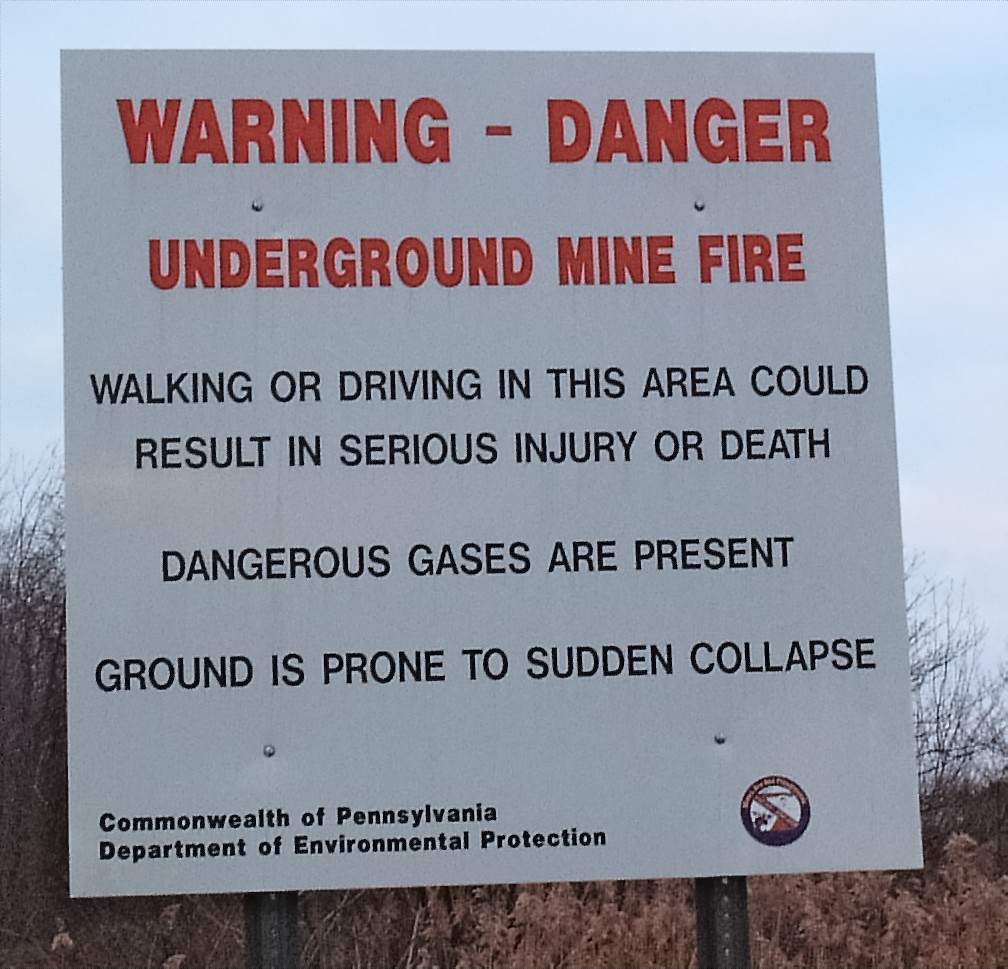|
Lehigh And Mahanoy Railroad
The Lehigh and Mahanoy Railroad, originally the Quakake Railroad (pronounced quake-ache), was a rail line connecting Black Creek Junction, in the Lehigh Valley, with Quakake, Delano, and Mount Carmel. Opened from Black Creek Junction to Quakake in 1858 and to Mount Carmel in 1860, it allowed anthracite coal mined along the line and bridge traffic to move east towards New York City. After 1866, it was merged into the Lehigh Valley Railroad to become its Mahanoy Branch. History The Quakake Railroad was chartered on April 25, 1857 to build a connection between the Beaver Meadow Railroad (later the Lehigh Valley Railroad's Hazleton Branch) at Black Creek Junction, where Quakake Creek empties into Black Creek and the Catawissa, Williamsport and Erie Railroad between its two summit tunnels in Rush Township, Schuylkill County, Pennsylvania ( Lofty Tunnel and Ryan's Tunnel). The CW&E's predecessor, the Little Schuylkill and Susquehanna Railroad, had graded this route as its Quakake ... [...More Info...] [...Related Items...] OR: [Wikipedia] [Google] [Baidu] |
Northeastern Pennsylvania
Northeastern Pennsylvania (NEPA) is a geographic region of the U.S. state of Pennsylvania that includes the Pocono Mountains, the Endless Mountains, and the industrial cities of Scranton, Wilkes-Barre, Pittston, Hazleton, Nanticoke, and Carbondale. A portion of this region constitutes a part of the New York City metropolitan area. Unlike most parts of the Rust Belt, some of these communities are experiencing a modest population increase, and others, including Monroe and Pike counties, rank among the fastest growing areas of Pennsylvania. Northeastern Pennsylvania borders the Lehigh Valley to its south, Warren County, New Jersey to its east, and Broome County, New York to its north. Area Northeastern Pennsylvania comprises Bradford County, Carbon County, Columbia County, Lackawanna County, Luzerne County, Monroe County, Montour County, Northumberland County, Pike County, Schuylkill County, Sullivan County, Susquehanna County, Wayne County, and Wyoming County. ... [...More Info...] [...Related Items...] OR: [Wikipedia] [Google] [Baidu] |
Tamanend, Pennsylvania
Tamanend is an unincorporated community in Schuylkill County, in the U.S. state of Pennsylvania. History The community was named after Tamanend Tamanend (historically also known as Taminent, Tammany, Saint Tammany or King Tammany, "the Affable," ) (–) was the Chief of Chiefs and Chief of the Turtle Clan of the Lenni-Lenape nation in the Delaware Valley signing the Peace Treaty with ..., a Native American chieftain. References Unincorporated communities in Pennsylvania Unincorporated communities in Schuylkill County, Pennsylvania {{SchuylkillCountyPA-geo-stub ... [...More Info...] [...Related Items...] OR: [Wikipedia] [Google] [Baidu] |
Ashland, Pennsylvania
Ashland is a borough in Schuylkill County in the U.S. state of Pennsylvania, northwest of Pottsville. It is part of Northeastern Pennsylvania. A small part of the borough also lies in Columbia County, although all of the population resided in the Schuylkill County portion as of the 2020 census. The borough lies in the anthracite coal region of eastern Pennsylvania. Settled in 1850, Ashland was incorporated in 1857, and was named for Henry Clay's estate near Lexington, Kentucky. The population in 1900 was 6,438, and in 1940, 7,045, but had dropped to 2,471 at the 2020 census. Ashland is part of the Pottsville micropolitan statistical area. It is the location of Pioneer Tunnel, a tourist attraction featuring a tour of a coal mine on mine cars and a separate narrow gauge steam train ride. History For a long time after southern Pennsylvania was settled, the area that is now Ashland was mostly wilderness except for a hotel in the area in 1820. A prominent citizen of the coun ... [...More Info...] [...Related Items...] OR: [Wikipedia] [Google] [Baidu] |
Girardville, Pennsylvania
Girardville is a borough in Schuylkill County, Pennsylvania, United States, northwest of Reading. Anthracite coal deposits are in the region. Coal-mining provided employment and incomes for many of the 3,666 people who lived there in 1900. In 1910, 4,396 individuals called it home. The population was 1,519 at the 2010 census. It was founded in 1832 and is named after Stephen Girard of Philadelphia, who purchased large land holdings in and around the town. It was incorporated as a borough in 1872. Geography Girardville is located at (40.792104, -76.284555). According to the United States Census Bureau, the borough has a total area of , of which is land and 1.85% is water. Demographics As of the census of 2000, there were 1,742 people, 767 households, and 486 families residing in the borough. The population density was 3,327.4 people per square mile (1,293.4/km2). There were 886 housing units at an average density of 1,692.4 per square mile (657.9/km2). The racial makeup of ... [...More Info...] [...Related Items...] OR: [Wikipedia] [Google] [Baidu] |
Kohinoor Junction
The Koh-i-Noor ( ; from ), also spelled Kohinoor and Koh-i-Nur, is one of the largest cut diamonds in the world, weighing . It is part of the Crown Jewels of the United Kingdom. The diamond is currently set in the Crown of Queen Elizabeth The Queen Mother. There are multiple conflicting legends on the origin of the diamond. However, in the words of Theo Metcalfe there is 'very meager and imperfect' evidence of the early history of the Koh-i-Noor before the 1740s, that can directly tie it to any ancient diamond. There is no record of its original weight, but the earliest attested weight is 186 old carats (191 metric carats or 38.2 g). The first verifiable record of the diamond comes from a history by Muhammad Kazim Marvi of the 1740s Invasion of Northern India. Marvi notes that the Koh-i-Noor as being one of many stones on the Mughal Peacock Throne that Nader Shah looted from Delhi. The diamond then changed hands between various empires in south and west Asia, until being ... [...More Info...] [...Related Items...] OR: [Wikipedia] [Google] [Baidu] |
Centralia, Pennsylvania
Centralia is a borough and near- ghost town in Columbia County, Pennsylvania, United States. It is part of Northeastern Pennsylvania. Its population has declined from 1,000 in 1980 to five residents in 2020 because a coal mine fire has been burning beneath the borough since 1962. Centralia, part of the Bloomsburg–Berwick metropolitan area, is the least-populated municipality in Pennsylvania. It is completely surrounded by Conyngham Township. All real estate in the borough was claimed under eminent domain in 1992 and condemned by the Commonwealth of Pennsylvania. Centralia's ZIP code was discontinued by the Postal Service in 2002. State and local officials reached an agreement with the seven remaining residents on October 29, 2013, allowing them to remain in Centralia until their deaths, after which the rights to their houses will be taken through eminent domain. History Early history Many of the Native American tribes in what is now Columbia County sold the land that mak ... [...More Info...] [...Related Items...] OR: [Wikipedia] [Google] [Baidu] |
Raven Run, Pennsylvania
A raven is any of several larger-bodied bird species of the genus ''Corvus''. These species do not form a single taxonomic group within the genus. There is no consistent distinction between "crows" and "ravens", common names which are assigned to different species chiefly on the basis of their size. The largest raven species are the common raven and the thick-billed raven. Etymology The term "raven" originally referred to the common raven (''Corvus corax''), the type species of the genus ''Corvus'', which has a larger distribution than any other species of ''Corvus'', ranging over much of the Northern Hemisphere. The modern English word ''raven'' has cognates in all other Germanic languages, including Old Norse (and subsequently modern Icelandic) and Old High German , all of which descend from Proto-Germanic . Collective nouns for a group of ravens (or at least the common raven) include "rave", "treachery", "unkindness" and "conspiracy". In practice, most people use the mor ... [...More Info...] [...Related Items...] OR: [Wikipedia] [Google] [Baidu] |
Mahanoy City, Pennsylvania
Mahanoy City (pronounced MAHA-noy, also MA-noy locally) is a borough located southwest of Wilkes-Barre and 13 miles southwest of Hazleton, in northern Schuylkill County, Pennsylvania. It is part of the Coal Region of Pennsylvania and is located entirely within, but is not part of, Mahanoy Township. The name Mahanoy is believed to be a variation of the Native American word ''Maghonioy'', or "the salt deposits". History Mahanoy City, originally a part of Mahanoy township, was settled in 1859 and incorporated as a borough by decree of the Court of Quarter Sessions of Schuylkill County on December 16, 1863. It was served by branches of the Lehigh Valley and the Philadelphia & Reading railways. Mahanoy City lies in a valley in the Pennsylvania Coal Region and was a major center of anthracite production; the area was embroiled in the Molly Maguires incidents. In 2010, the borough erected the Molly Maguire Historic Park, which features a Zenos Frudakis statue of a hooded miner ... [...More Info...] [...Related Items...] OR: [Wikipedia] [Google] [Baidu] |
Park Place, Pennsylvania
A park is an area of natural, semi-natural or planted space set aside for human enjoyment and recreation or for the protection of wildlife or natural habitats. Urban parks are green spaces set aside for recreation inside towns and cities. National parks and country parks are green spaces used for recreation in the countryside. State parks and provincial parks are administered by sub-national government states and agencies. Parks may consist of grassy areas, rocks, soil and trees, but may also contain buildings and other artifacts such as monuments, fountains or playground structures. Many parks have fields for playing sports such as baseball and football, and paved areas for games such as basketball. Many parks have trails for walking, biking and other activities. Some parks are built adjacent to bodies of water or watercourses and may comprise a beach or boat dock area. Urban parks often have benches for sitting and may contain picnic tables and barbecue grills. Th ... [...More Info...] [...Related Items...] OR: [Wikipedia] [Google] [Baidu] |
Foreclosure
Foreclosure is a legal process in which a lender attempts to recover the balance of a loan from a borrower who has stopped making payments to the lender by forcing the sale of the asset used as the collateral for the loan. Formally, a mortgage lender (mortgagee), or other lienholder, obtains a termination of a mortgage borrower (mortgagor)'s equitable right of redemption, either by court order or by operation of law (after following a specific statutory procedure). Usually a lender obtains a security interest from a borrower who mortgages or pledges an asset like a house to secure the loan. If the borrower defaults and the lender tries to repossess the property, courts of equity can grant the borrower the equitable right of redemption if the borrower repays the debt. While this equitable right exists, it is a cloud on title and the lender cannot be sure that they can repossess the property. Therefore, through the process of foreclosure, the lender seeks to immediatel ... [...More Info...] [...Related Items...] OR: [Wikipedia] [Google] [Baidu] |
Catawissa Railroad
The Catawissa Railroad was a railroad that operated in Pennsylvania between 1860 and 1953. For most of its lifespan it was leased by the Reading Company, and was subsequently merged into the Reading. History The original company was chartered as the Little Schuylkill and Susquehanna Railroad in 1831. It planned to build a rail line between Tamanend (also called Little Schuylkill Junction; west of Tamaqua) and Milton. The principals in the company included Christian Brobst and Joseph Paxton of Catawissa. Construction began c. 1835, but the banking panic of 1837 restricted investments needed to continue work on the railroad. In 1849 the company reorganized, to attract new investors, and became the Catawissa, Williamsport and Erie Railroad (CW&E). In the early 1850s construction resumed, and in 1854 the railroad reached Milton, where it connected with the Sunbury and Erie Railroad (renamed the Philadelphia and Erie in 1861). At Tamanend the railroad connected with the Little Sc ... [...More Info...] [...Related Items...] OR: [Wikipedia] [Google] [Baidu] |







